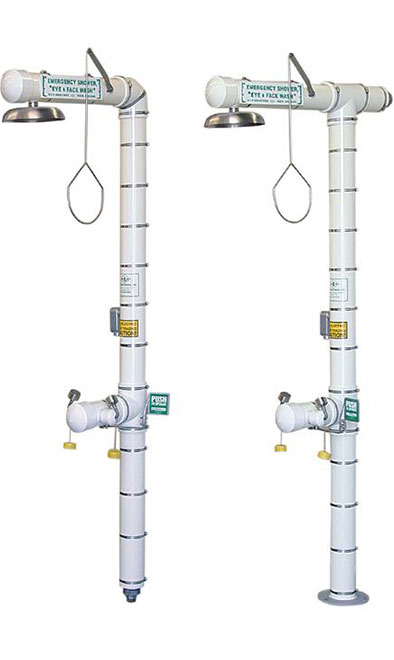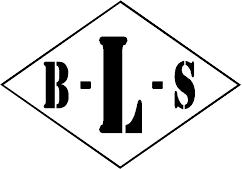What Makes a Drench Shower Different? Understanding the Design, Purpose, and Compliance Needs

In industries where hazardous materials are present, the importance of emergency equipment cannot be overstated. Among the most critical of these safety tools are drench showers—engineered systems designed to deliver a deluge of water over the body in seconds to prevent or minimize chemical injuries. But what exactly sets a drench shower apart from other types of emergency equipment? Why is its design so crucial, and what standards must it meet to be effective and compliant?
The Unique Role of Drench Showers in Workplace Safety
Drench showers serve a very specific function in the spectrum of emergency decontamination. Unlike eye wash stations or face wash units—which are targeted at localized exposure—drench showers are designed to quickly saturate the entire body with water, neutralizing and flushing away corrosive substances or hazardous materials.
These systems are especially critical when:
- An employee’s clothing or skin is exposed to harmful chemicals
- Large surface areas of the body are affected
- There’s a need for rapid and full-body irrigation
- An employee is incapacitated and needs assistance in decontaminating
Where other emergency devices may fall short in scope or coverage, drench showers provide the broad, immediate response necessary for full-body decontamination.
Key Design Elements That Set Drench Showers Apart
The term “drench” is deliberate—it emphasizes the sheer volume of water and coverage area needed to make these showers effective. Several engineering and design features make drench showers stand out:
1. High Flow Rate Delivery
A compliant drench shower must deliver water at a minimum flow rate of 20 gallons per minute (GPM) at 30 psi. This high flow rate ensures that enough water reaches the exposed area rapidly, helping to dilute and flush away chemicals.
2. Unobstructed Coverage
Drench showers are built to deliver water over the entire body simultaneously. The spray pattern must cover at least 20 inches in diameter at 60 inches above the surface on which the user stands. This ensures uniform coverage, minimizing the chances of contaminants remaining in place.
3. Hands-Free Activation
In an emergency, time is critical. That’s why drench showers are required to have single-motion, hands-free activation. Pull rods or paddles are typical mechanisms—once engaged, water must begin flowing in less than one second and continue without the user holding any control.
4. Durable Construction Materials
The materials used must resist corrosion, chemical attack, and extreme environmental conditions. At B-L-S Industries, Inc., we use stainless steel, galvanized steel, and durable coatings to extend product life even in the harshest environments.
5. Tepid Water Delivery
Recent ANSI updates require that emergency showers deliver water within a tepid range (60°F to 100°F). This temperature helps avoid thermal shock, hypothermia, or delayed usage due to discomfort, especially when the shower needs to be used for 15 minutes or more.
Compliance Requirements: Understanding ANSI and OSHA Standards
Ensuring your drench shower meets regulatory standards isn’t just good practice—it’s a legal necessity. Two primary standards govern these systems in the United States:
ANSI/ISEA Z358.1 – The Gold Standard
The ANSI/ISEA Z358.1-2014 standard outlines the design, performance, installation, use, maintenance, and training requirements for emergency equipment. Under this standard:
- The drench shower must be installed in a location accessible within 10 seconds from hazardous areas.
- The path to the unit must be free of obstructions.
- Water flow must remain constant for at least 15 minutes.
- Units must be inspected weekly and tested annually for performance validation.
ANSI compliance isn’t legally binding by itself, but OSHA often references ANSI standards when evaluating workplace safety violations. Non-compliance can result in fines, citations, and increased liability in the event of injury.
OSHA Regulations
OSHA doesn’t explicitly detail every feature of drench showers, but it mandates that employers provide suitable facilities for quick drenching or flushing of the eyes and body when employees may be exposed to injurious corrosive materials. This requirement is found in:
- 29 CFR 1910.151(c) for general industry
- 29 CFR 1926.50(g) for construction
OSHA inspectors frequently refer to ANSI Z358.1 when assessing compliance, making ANSI adherence a practical requirement for most workplaces.
Installation Considerations: Getting It Right the First Time
Installing a drench shower isn’t as simple as mounting it on a wall and connecting water. Proper installation ensures compliance and functionality in a crisis. Here are essential factors:
Location & Accessibility
The shower must be installed no more than 10 seconds travel time (roughly 55 feet) from the hazard area. The pathway should be:
- Clearly marked with visible signage
- Well-lit
- Free from obstructions or locked doors
If chemicals can cause delayed injury (like corrosives that don’t immediately burn), the unit must be even closer.
Water Supply
The unit needs to be connected to a water source that can provide sustained flow at the correct pressure for 15 minutes or more. A dedicated line is preferred to prevent pressure drops.
Drainage
Although ANSI doesn’t require it, having an effective drainage system minimizes the risk of puddles, slips, and contamination. Consider floor drains or grated surfaces during planning.
Climate Concerns
Freeze protection is vital in outdoor or unheated environments. B-L-S Industries offers heated shower enclosures and frost-proof units designed to perform reliably even in sub-zero temperatures.
Common Misconceptions About Drench Showers
Even among safety professionals, there are several myths about drench showers. Let’s clear up a few:
“Any shower head will do.”
False. Drench showers require specialized heads that distribute water evenly over the body. Domestic shower fixtures will not meet ANSI requirements.
“Employees will never need to use it.”
Hopefully not, but the system must always be ready for immediate use. Accidents are unpredictable, and equipment maintenance and testing must be routine.
“We can skip heating—it’s too expensive.”
Not so. Tepid water is now a compliance standard. If the water is too cold, employees may leave the shower early or avoid it altogether, risking further injury.
Real-World Applications: Who Needs a Drench Shower?
Drench showers are used in a broad range of industries. Any facility that uses or stores hazardous chemicals, corrosives, solvents, or biological agents should have compliant drench showers. Common industries include:
- Chemical manufacturing
- Petrochemical and oil refining
- Pharmaceutical labs
- Pulp and paper mills
- Food processing facilities
- Mining and mineral extraction
- Industrial cleaning operations
In these environments, spills, splashes, and vapor exposure can happen without warning. A drench shower is often the first and best defense against long-term injury.
Custom vs. Standard: Which Type Is Right for You?
At B-L-S Industries, we provide both standard and custom-engineered emergency showers. Here’s how to choose:
Standard Units
Perfect for facilities with predictable layouts and environmental conditions. These units are ANSI-compliant, cost-effective, and readily available.
Custom-Designed Units
Ideal for specialized work zones or extreme environments. We can design showers to fit:
- Unique architectural constraints
- Dual-functionality (with eye/face wash)
- Hazardous environments (explosion-proof, corrosion-resistant)
- Remote or outdoor use (solar-powered, tank-fed, insulated)
With over 40 years of engineering expertise, our team can create the right solution for any environment.
Training and Maintenance: Don’t Set It and Forget It
Weekly Activation
ANSI requires that showers be activated weekly to ensure proper function and clear the line of any sediment or bacterial buildup.
Annual Performance Testing
A full functionality test must be conducted yearly, verifying flow rate, spray pattern, and valve operation.
Employee Training
Personnel must be trained on:
- When and how to use the shower
- Proper disrobing protocol (contaminated clothing can worsen exposure)
- What to expect during use (shock, water temperature, duration)
Ongoing training and signage can make the difference between hesitation and decisive action.
Why Choose B-L-S Industries, Inc.?
Since 1976, B-L-S Industries has been a trusted leader in emergency safety equipment, providing solutions that meet and exceed industry standards. Headquartered in Carl Junction, MO, we offer more than just products—we offer peace of mind.
Here’s what sets us apart:
- Over Four Decades of Proven Expertise
- Wide Selection of Emergency Showers & Eye Wash Stations
- Custom Engineering Solutions for Unique Applications
- Durability in Extreme Environments
- Tepid Water Systems and Heated Enclosures
- Ongoing Customer Support and Maintenance Guidance
From concept to installation, we partner with you to ensure the protection of your workers.
Make Safety a Standard, Not a Goal
If your workplace includes exposure to hazardous chemicals or corrosive materials, don’t leave emergency preparedness to chance. A fully compliant, well-maintained drench shower can mean the difference between temporary discomfort and lifelong injury.
At B-L-S Industries, Inc., we’re committed to providing engineered safety solutions that work when you need them most. Whether you require a standard system or a custom-built configuration, our team is ready to help you choose the right unit for your environment.
Contact us today to learn more about our drench showers, eye wash stations, or complete safety systems.
